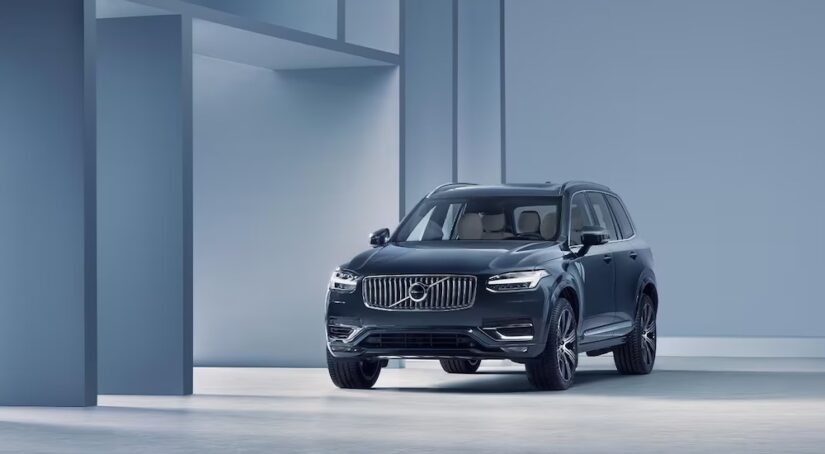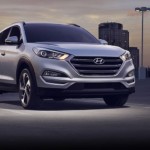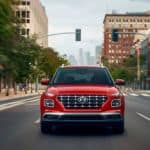People shopping for a compact crossover SUV have two common desires that are somewhat at odds with each other. One is having enough ground clearance to get over water, snow, branches, rocks, and hill crests without damaging the underside. The other is good fuel mileage, so they don’t have to spend as much time and money filling up the gas tank.
The problem is that the more ground clearance a vehicle has, the worse its fuel mileage tends to be. There are two reasons for this. One is that the vehicle is less aerodynamic, so you need to use more power to go the same speed. The second is that the vehicle is less stable, meaning you must slow down more for corners before speeding up again; using this more aggressive driving style can decrease fuel economy by up to 40%.
As a result, it may seem impossible to get the best of both worlds. For example, the Subaru Outback Wilderness has an impressive 9.5 inches of ground clearance but only gets an EPA-estimated 23 MPG. Conversely, the Kia Niro hybrid is rated for a whopping 49 MPG but has a mere 6.3 inches of clearance, making it much more difficult to clear obstacles. Still, people who want both ground clearance and fuel economy can find a good compromise.
Which current small crossover has the best combination of these two important features? I looked at dozens of contenders and narrowed it down to five finalists for people who want strong performance across the board.
5. Volvo XC60
Owning a comfortable luxury SUV doesn’t mean getting the short stick on ground clearance or fuel economy. The Volvo XC60 is the most powerful SUV on this list, getting 247 hp and 266 lb-ft of torque from the turbocharged I-4 mild hybrid engine. Even so, this crossover gets a respectable EPA-estimated 26 MPG in front-wheel drive (FWD) and 25 MPG in all-wheel drive (AWD). This efficiency comes with 8.5 inches of ground clearance to handle everything from potholes to small boulders.
As a Volvo, you can expect premium features across the board. The XC60 has a refined driving experience with smooth acceleration and an active air suspension. The interior comes with high-end driver safety features, integrated Google Services, 63.3 cu.ft. of cargo space, and a panoramic roof. Available features such as a Bowers & Wilkins 15-speaker audio system and an air purifier give you ultimate comfort. This crossover is also available as a plug-in hybrid—the Volvo XC60 Recharge—which gets 27 MPG combined in gas-only mode.
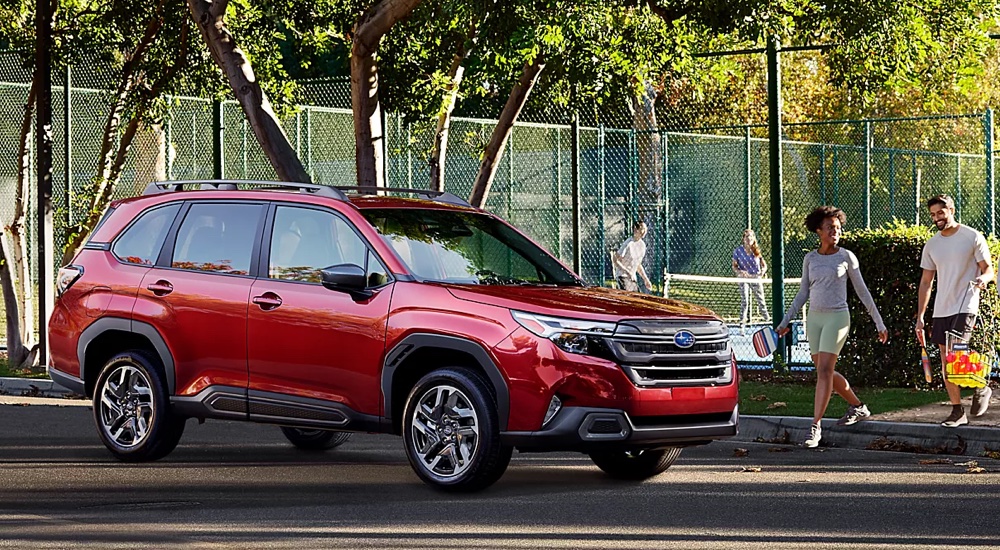
4. Subaru Forester
There were two serious contenders from Subaru, with the Crosstrek and the Forester both offering an EPA-estimated 29 MPG and 8.7 inches of ground clearance in their standard configurations. Ultimately, I gave the nod to the Forester because it achieves this with substantially more interior room and cargo space. Passengers in the Forester get almost three more inches of rear legroom and significantly more headroom, and the Forester has 74.4 cu.ft. of cargo space compared to the Crosstrek’s 54.9 cu.ft.
The rest of the package offers the reliable performance and quality people expect from Subaru. The 2.5L Boxer engine provides 182 hp and 176 lb-ft of torque with this brand’s famed symmetrical AWD system that improves traction on rough or slippery terrain. You can also boost ground clearance to 9.2 inches while getting other off-road upgrades with the Wilderness trim. (Note that this drops the fuel economy to 27 MPG.) Raised roof rails for cargo, soft-touch interior materials, advanced driver assistance technology, and LED headlights that respond to steering inputs are other ways the Subaru Forester is an impressive compact crossover.
3. Nissan Rogue
The next entry has slightly less room above the ground but makes up for it in fuel economy. The Nissan Rogue is one of the most efficient non-hybrid compact SUVs, getting an EPA-estimated 33 MPG combined in FWD and 31 MPG in AWD; it does this despite having 19 more hp and 49 more lb-ft of torque than the Forester. This is thanks in part to a continuously variable transmission (CVT) that delivers power more efficiently and reduces total vehicle weight. With 8.3 inches of ground clearance, there’s still plenty for most light off-road and foul weather situations.
Even with these clearance and efficiency numbers, there was a time when the Rogue wouldn’t have made this list. But the new generation introduced in 2021 was a game-changer that MotorTrend called the best overall compact SUV. It has independent front and rear suspensions tuned for off-roading with 74.1 cu.ft. of cargo area for all your supplies. Higher-level trims get add-ons like a 12.3-inch infotainment touchscreen, quilted leather upholstery, a panoramic moonroof, and wireless smartphone mirroring. You can feel safe, too, as this vehicle was named an IIHS Top Safety Pick and received a five-star crash test rating from the NHTSA.
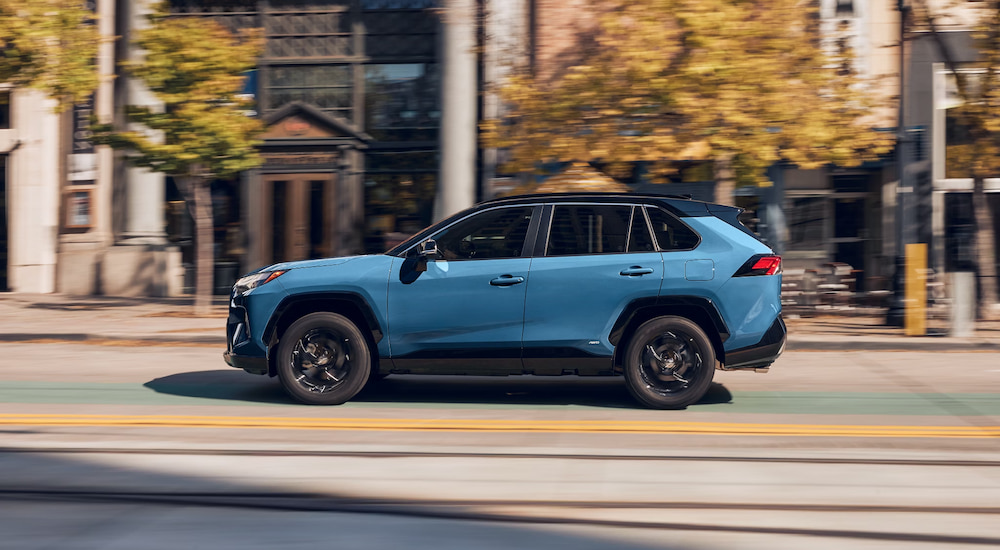
2. Toyota RAV4 Hybrid
It’s no surprise that, to beat the combinations I’ve discussed so far, hybrid technology must now be employed. The hybrid version of the famed Toyota RAV4 gets an outstanding EPA-estimated 39 MPG combined from a 2.5L four-cylinder engine, twin electric drive motors, an electronically controlled CVT, and on-demand AWD. Its 219 hp is 16 more than the non-hybrid RAV4 to give you a little more punch. At 8.1 inches of ground clearance, the RAV4 Hybrid has slightly less room than the 8.4-8.6 inches of the regular RAV4, but it’s still enough for most drivers.
This compact crossover rates solidly in most other categories as well, with 69.8 cu.ft. of cargo space, an upscale interior, LED lighting, and the Toyota Safety Sense 2.5 driver assistance suite. With the trail-tuned suspension on the Woodland Edition, you can do more serious off-road adventuring and only lose about 3 MPG. The standard eight-inch touchscreen is a bit sparse, but you can upgrade to a 10.5-inch screen that has voice recognition. The RAV4 Prime plug-in hybrid is available as well, with 302 hp and better standard tech, though it does have less cargo capacity.
1. Hyundai Tucson Hybrid
Now it’s time for the top pick—and it may be unexpected. In terms of merging off-road-friendly ground clearance and burning less fuel, no compact crossover can match the Hyundai Tucson Hybrid. It gets an EPA-estimated 37 MPG combined from a 1.6L turbo-four engine and HTRAC AWD configuration; its 231 hp is 44 more than a regular Tucson while getting an added 11 MPG—and, if you want even more, there is a plug-in hybrid Tucson that storms the trails with 261 hp, though its gas-only economy is lower at 35 MPG. The ground clearance is the same as the Rogue, giving you 8.3 inches of security on any surface.
Hyundai has long shed its reputation as a budget nameplate, and the Tucson Hybrid proves them capable once again. Even the barebones model is still pretty loaded with alloy wheels, all-LED lighting, a digital instrument cluster, a panoramic sunroof, a 10.3-inch infotainment touchscreen with built-in navigation, and 74.5 cu.ft. of cargo space, among other features. Higher trims step things up with a heated steering wheel, leather-trimmed seats, and a few more driver assistance features to supplement your journey.
Get a Small SUV That Drives Big
Overall, I don’t think there’s a wrong choice between these five compact crossovers. Each shows that compromising on ground clearance and fuel efficiency doesn’t mean your vehicle has to be mediocre. These automakers have found a way to deliver a “big SUV” experience while maintaining what people like about crossovers, giving drivers a blend that’s never bland. Check them out today and find the one that reflects how you approach the road and trails.
